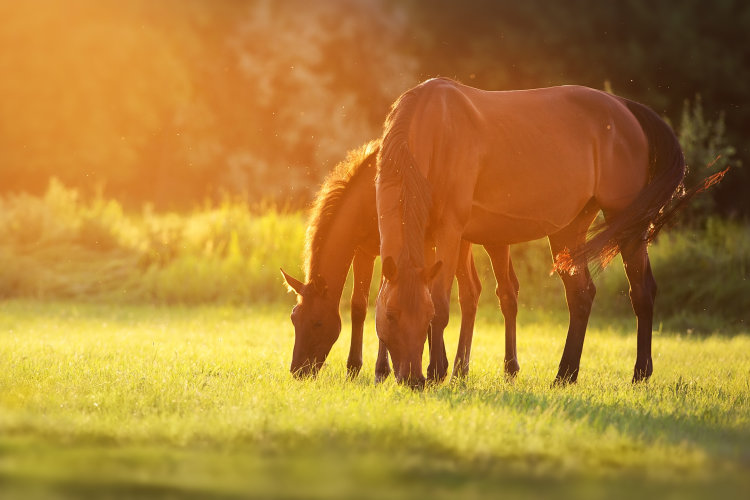Tips on high fructan levels in spring grass!

Carbohydrates
Under the influence of sunlight, photosynthesis in the grass produces glucose from CO2, which causes the sugar content in the grass to peak in the afternoon. These sugars allow the plant to grow at night under favourable conditions, resulting in low sugar levels in the plant by morning. These fluctuations in grass sugar levels also cause glucose and insulin levels in the blood of grazing horses to fluctuate widely. Frequent fluctuations can contribute to the development of insulin resistance in horses, causing tissues to become less sensitive to the action of insulin and blood glucose levels to become uncontrollable. Insulin levels will therefore rise in turn, in an attempt to optimise glucose levels as yet. Elevated sugar and insulin levels are pernicious for the horse and can lead to laminitis.
To prevent this, when creating horse pastures, it is important to use special grass mixtures for horses, with grasses low in sugar. In addition, pasture management is very important. The horses can be grazed for an hour longer each time during the first few days and as much as possible in the morning, when the sugar content in the grass is low.
It should be taken into account that when conditions for grass growth are not optimal at night, for example when it is too cold or in drought conditions, the stored sugars in the grass cannot be consumed at night. As a result, sugar concentrations will also be very high in the morning. Horses prone to laminitis or suffering from other metabolic disorders should be protected from the exceptionally high sugar levels with a grass basket or by stabling them.
High moisture content
Besides the high sugar content, young grass also has a high moisture content. Horses that were kept in stalls all winter and fed straw and hay will have to gradually get used to the young spring grass to avoid developing diarrhoea. It is recommended that horses be grazed for only one hour during the first week. Afterwards, the duration of grazing can be built up by one hour at a time. Animals that are grazed 24 hours a day from spring onwards can be protected by applying a grazing cage.
Other useful tips
Besides good pasture management, the following tips can also help make a smooth transition from stable to pasture:
Feed hay or straw before the horses go out to pasture: this ensures that digestion of the moisture-rich grass will be more stable and the horse will be less hungry.
Regular deworming: to reduce the infection pressure on the pasture, it is recommended to deworm all horses before they enter the pasture.
Let the grass grow for 2-3 weeks before the horses go outside so that the grass can already mature.
Make sure pastures are not overgrazed: studies show that when grass can continue to grow, fewer carbohydrates are stored. Moreover, the fructans in grass are stored at the base, close to the ground. If the pasture is overgrazed, horses will be forced to graze these fructan-rich parts of the grass as well.
